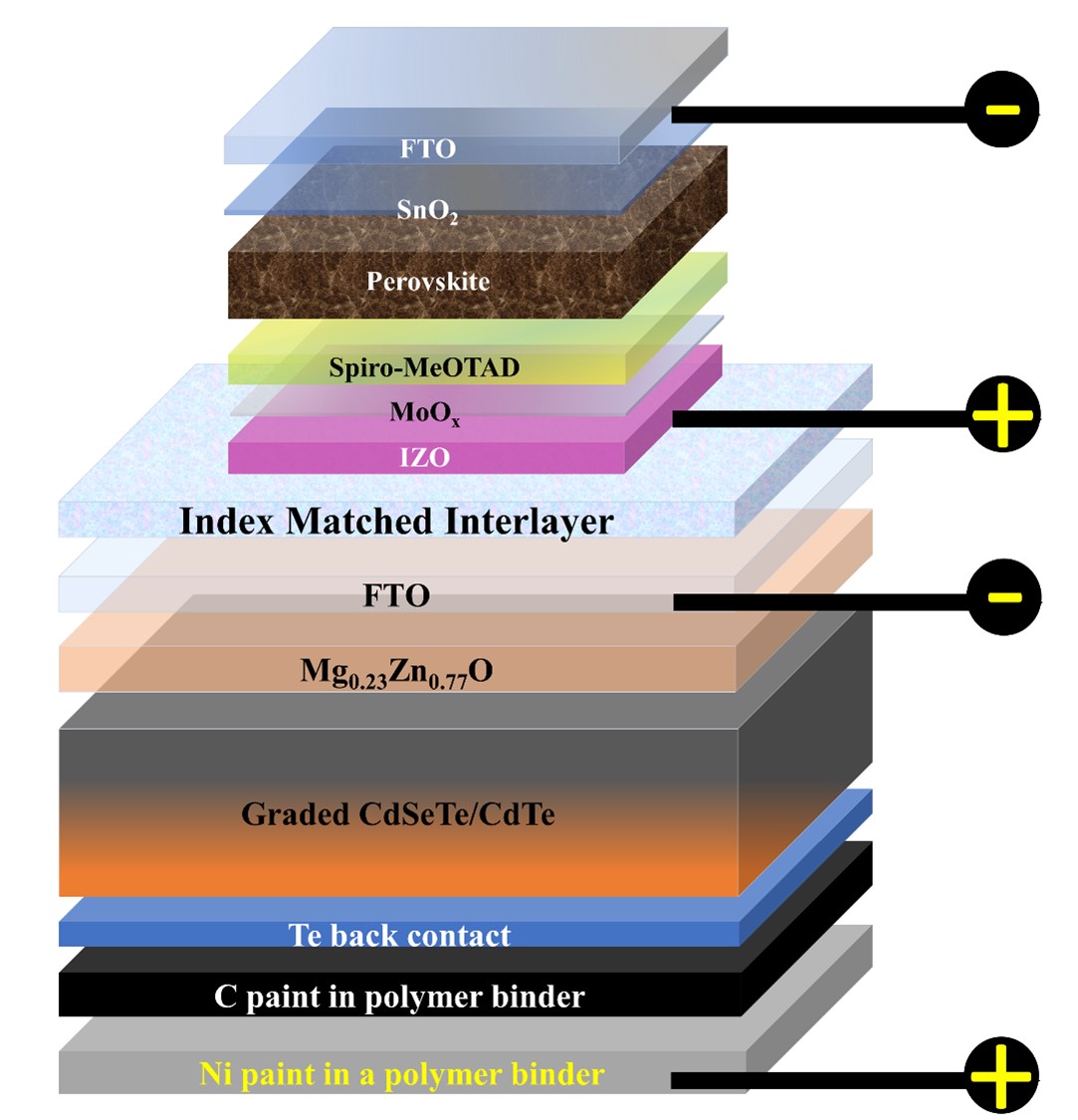An international research group led by the Indian Institute of Technology Bombay has developed a four-terminal (4T) tandem solar cell based on a top cell with a perovskite absorber and a bottom device made of cadmium telluride (CdTe).
“Perovskite materials have already proven their efficiency and suitability in tandem solar cells, particularly in combination with monocrystalline silicon solar cells, as well as CIGS and CIS solar cells,” one of the research lead authors, Ananta Paul, told pv magazine. “However, the second most commercially successful CdTe solar cells after monocrystalline silicon, remains largely unexplored. Given the commercial success of CdTe solar cells, they present a compelling opportunity for investigation in thin-film tandem applications.”
The scientists said that, for the design of the top cell, they adopted an inverted architecture and used a near-infrared (NIR) transparent perovskite absorber with an energy bandgap of 1.63 eV, while a CdTe material with an energy bandgap of 1.39 eV was used for the bottom cell.
The key feature of the top device is a highly conductive and sputtered transparent electrode, which the academics said is crucial to the functionality of transparent perovskite solar cells.
“Our team’s distinctive customized in-house designed sputtering system with the help of Excel Instruments, Mumbai – India, and a unique recipe for thin-film deposition enabled the production of transparent perovskite solar cells with an impressive 18.3% efficiency,” the research’s corresponding author, Dinesh Kabra, said. “This high-efficiency perovskite cell was then coupled with a 19.56% efficient CdTe solar cell supplied by our collaborator Amit Munshi from Colorado State University, in the United States.”
The group designed the top cell with a substrate made of f-doped tin dioxide (FTO), an electron transport layer (ETL) made of tin oxide (SnO2), a perovskite absorber, a hole transport layer (HTL) based on Spiro-OMeTAD, a buffer layer made of molybdenum oxide (MoOx), and a transparent contact based on indium zinc oxide (IZO). Via an index-matched interlayer, this cell was then stacked onto a bottom cell using an FTO substrate, a zinc magnesium oxide (ZnMgO) layer, the CdTe absorber, and a tellurium (Te) back contact.
For the interlayer between the two cells, the researchers used index-matching liquid with a refractive index (RI) of 1.405, which they claim improved the overall current density of the bottom cell.
Tested under standard illumination conditions, the top device achieved a power conversion efficiency of 18.3%, an open-circuit voltage of 1.07 V, a short-circuit current density of 23.75 mA/cm2, and a fill factor of 72.0%. The bottom device obtained a 19.56% efficiency, an open-circuit voltage of 0.87 V, a short-circuit current density of 27.38 mA/cm2, and a fill factor of 82.1%.
The champion tandem solar cell built with the two devices and an active surface of 0.175 cm2 achieved an efficiency of 24.2%. A larger device with an active area of 0.805 cm2 reached an efficiency of 21.13%. The cell was also found to retain over 80% of its original efficiency after 3,000 h at dark storage conditions.
The cell concept was introduced in the paper “4-T CdTe/Perovskite Thin Film Tandem Solar Cells with Efficiency >24%,” published in ACS Energy Letters. “Despite the viability and proven efficiency of CdTe/perovskite thin-film tandem solar cells remained uncharted territory,” said co-author, Abhijit Singha. “This research will pave the way for a new era in thin film tandem photovoltaics, confirming that we can think beyond monocrystalline Si solar cells”.
This content is protected by copyright and may not be reused. If you want to cooperate with us and would like to reuse some of our content, please contact: editors@pv-magazine.com.









By submitting this form you agree to pv magazine using your data for the purposes of publishing your comment.
Your personal data will only be disclosed or otherwise transmitted to third parties for the purposes of spam filtering or if this is necessary for technical maintenance of the website. Any other transfer to third parties will not take place unless this is justified on the basis of applicable data protection regulations or if pv magazine is legally obliged to do so.
You may revoke this consent at any time with effect for the future, in which case your personal data will be deleted immediately. Otherwise, your data will be deleted if pv magazine has processed your request or the purpose of data storage is fulfilled.
Further information on data privacy can be found in our Data Protection Policy.